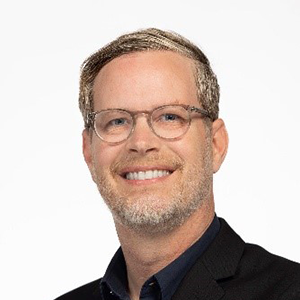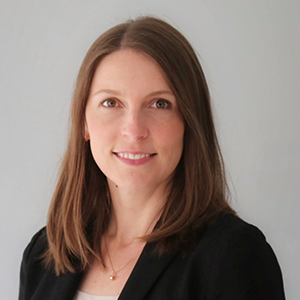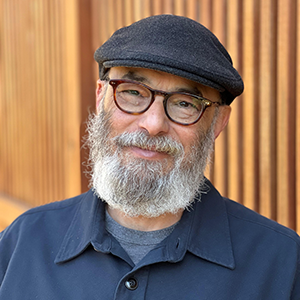What are you and your company doing to help reduce embodied carbon emissions?
Christopher Meek
Professor, UW Department of Architecture; Director, UW Integrated Design Lab, research group within the Department of Architecture in the College of Built Environments of the University of Washington
I started my career in New Mexico and New Orleans: places with distinct and vastly different cultural and climate contexts. One high, dry, and mountainous with incredible diurnal temperature swings and the other dense and lush with heat, haze, humidity, and jazz. Likewise, I was inspired by the vernacular architecture of these places: the earthen thermal mass of adobe and the layered lattice shading porches and shuttered jalousies of the French Quarter. Unfortunately, much of the work I was involved in as a young architect was indistinguishable between these two places rooted in the sameness of industrial mass-production and American building culture at the time. That dissonance set me on a path of seeking to advance buildings reflective of and aligned with their ecological and cultural context. Today that includes locally-responsive low-carbon solutions to the global challenge of climate change – crucial to sustaining the very ecosystems that define the nature of place.
Through my work at IDL I’m passionate about creating buildings that provide great user experiences, improve human health and productivity, whilst reducing resource consumption. Through interconnected research, technical assistance, and outreach, the UW IDL seeks to create broad-based, replicable pathways to achieving a high-quality low-carbon built environment. We seek synergies between climate-responsive design, natural systems, technology, and evidence-based practices that create healthy energy-efficient buildings that serve people and the planet.
UW IDL partners with industry, utilities, and government agencies to advance:
Buildings that improve human health and productivity while reducing resource consumption.
Policies and practices that transition our existing building stock to low-carbon high-value assets.
Buildings that provide resilience in the face of climate change.
Tools and methods that advance the practice of buildings design and elevate the design community.
Recently I had the opportunity to collaborate with two of my colleagues, Tomás Méndez Echenagucia an Assistant Professor in the Department of Architecture, and Teresa Moroseos, a Post-Doctoral Scholar at UW IDL to develop a method for evaluating the total lifecycle carbon impacts of building envelop investment decisions. Our intent is to provide building designers, owners, and policy makers with actionable guidance and a prioritization framework for establishing co-optimized lifecycle carbon performance of facade assembly components in a broad spectrum of climate contexts and energy carbon intensities. Our approach would be impossible without the groundbreaking work of the CLF, which both informs and inspires the direction of our research, education, and design team engagement work.

Christopher Meek
“Our intent is to provide building designers, owners, and policy makers with actionable guidance and a prioritization framework for establishing co-optimized lifecycle carbon performance of facade assembly components in a broad spectrum of climate contexts and energy carbon intensities.”
What are you and your organization doing to help reduce embodied carbon emissions?
Lauren Wingo
Senior Engineer and Project Manager at Arup
I had a strong interest in sustainability as an undergraduate, but with no widespread awareness of the environmental impacts of structural materials at the time, I did not know how to pair my interest with a career in structural engineering. Fortunately for me, an internship at Arup during my graduate years exposed me to the world of embodied carbon.
During the internship, I had the opportunity to help contribute to an early internal embodied carbon data tracking effort, using data from Arup’s Project Embodied Carbon Calculator tool. The data had a huge spread due to differences in life-cycle assessment tool used and scope of assessment – issues the industry is still working on improving to this day.
With my interest piqued, I returned to graduate school to write my thesis on structural whole building life-cycle assessment and started at Arup full-time the following year. Ever since, I have contributed to both internal and external initiatives focusing on embodied carbon and have been grateful to work at a firm like Arup that has been a thought leader on the topic for decades.
Since those early embodied carbon data collection efforts, Arup has supported other initiatives to collect and improve data in the U.S. We were involved in the data collection for the deQo database, which served as a precedent for the SE 2050 initiative, which then formally became the SE 2050 Commitment Program. As the vision for SE 2050 emerged, I led the database development process for the SE 2050 Database, which now contains embodied carbon data for almost 200 structural projects.
During COP26, Arup committed to performing whole life-cycle carbon assessments on all our buildings projects. This commitment represents the firm’s and my dedication to measuring and managing the impact the built environment has on global carbon emissions.

Lauren Wingo
“I returned to graduate school to write my thesis on structural whole building life-cycle assessment and started at Arup full-time the following year. Ever since, I have contributed to both internal and external initiatives focusing on embodied carbon and have been grateful to work at a firm like Arup that has been a thought leader on the topic for decades.”
What are you and your company doing to help reduce embodied carbon emissions?
Andy Krasnow
Director, Strategic Initiatives, BamCore
After a long, and not especially gratifying, career as a high-tech talent scout, I was approached to invest in a friend’s tiny home start-up. Architecture and design have been lifelong passions, so this seemed like a potentially great career segue. However, my due diligence led me to conclude that many tiny home people don’t think big. If I was to get involved with a start-up, I wanted it to have the potential for substantial upside—in terms of impact and economics. It was clear to me that the construction industry was ripe for disruption and that industrialized construction was one path forward. Both methods and materials needed to change, though. Seeing this as a systems integration problem, I began to seek out innovators in the space. It was during this quest that I discovered BamCore’s Prime Wall system—the most flexible/customizable, easy-to-install, and cost-effective framing system out there. When I was invited to join the team, it was a no-brainer.
While BamCore offers a superior building system by almost every metric, our bamboo-based product also promises to significantly lower both the embodied and operating carbon footprints of our structures. Lowering operating carbon, we think, is the low hanging fruit. But, if we’re going to make a meaningful dent in global carbon emissions, we must tackle the embodied carbon in the built environment. It’s the harder nut to crack. And the only way to do that is to rethink the materials used in construction, where even a small change can have a massive impact.
Bamboo is a marvelous fiber! It’s structurally stronger than wood, requires 80% less land for cultivation, and it regenerates annually compared to at least 25 years for wood. Because it grows so quickly, it sequesters more carbon than trees, and we store that carbon in our buildings. Think of it, not only are we building better, greener, and faster with our system but we’re saving the forests in the process. Weaning the world off of wood timber and substituting it with timber bamboo is the proverbial win-win proposition.
I’ve been an ardent conservationist for much of my life but, outside of my day-to-day activities, I’d never really considered the possibility of having an impact, on a global scale. BamCore has afforded me that opportunity and I feel blessed to be a part of it.

Andy Krasnow
“Our intent is to provide building designers, owners, and policy makers with actionable guidance and a prioritization framework for establishing co-optimized lifecycle carbon performance of facade assembly components in a broad spectrum of climate contexts and energy carbon intensities.”
What are you and your company doing to help reduce embodied carbon emissions?
Katie Poss
Director, Sustainability Initiatives, National Ready Mixed Concrete Association (NRMCA)
CLF Nashville Hub Co-Lead
My passion for sustainability and green building started in my early 20s, when a friend invited me to the backwoods of Tennessee where he was constructing a monolithic dome. I helped with the project, learning how to mix and plaster concrete. I enjoyed the physical aspect of the work and seeing the fruits of my labor when the project was complete. My friend and I ended up starting a business together. A pivotal moment in my career was managing our largest project, a 20-foot diameter dome which incorporated Earthship principles in the design.
To capitalize on solar heat gain during the day, we oriented the structure to face south. Additionally, we utilized old tires filled with dirt to increase the thermal mass of the south facing wall. We cut the tops off recycled beer and wine bottles to create “bottle bricks”, which created a striking stained-glass effect. I remember dumpster diving in my local glass recycling bin to find the most appealing colors and shapes for the bottle brick walls. Bombay Sapphire and Bud Light Platinum bottles were my favorite. I vividly remember the day we completed the solar panel installation and ran our concrete mixer off solar power for the first time — a welcome break from the loud gas-powered generator we had been using.
At the time, I wasn’t familiar with the term “embodied carbon,” but we were reducing embodied carbon by using recycled materials and renewable energy on the jobsite. My passion was affirmed for addressing embodied carbon in the built environment, and making this the focus of my career, when I saw Chris Magwood’s talk on “The Carbon Elephant in the Room” and something clicked.
At the National Ready Mixed Concrete Association (NRMCA), we work with ready-mix suppliers, designers, developers, and contractors to quantify embodied carbon and implement carbon-reduction strategies on projects. We are an Environmental Product Declaration (EPD) program operator, meaning we verify and publish EPDs for ready-mix concrete, aggregates, and cement. In 2014, NRMCA published its first industry-wide EPD and benchmark report. Through these benchmark reports, we have demonstrated a 21% reduction in global warming potential between 2014 and 2021. Furthermore, NRMCA has signed on to the Architecture 2030 challenge for products, which targets a 50% reduction in carbon footprint by 2030 and carbon neutrality by 2050. We still have a long way to go in achieving these goals, but I am excited about the innovation, emerging low carbon materials, and the commitment of the industry to reduce the carbon footprint of concrete.

Katie Poss
“At the time, I wasn’t familiar with the term embodied carbon, but we were reducing embodied carbon by using recycled materials and renewable energy on the jobsite. My passion was affirmed for addressing embodied carbon in the built environment, and making this the focus of my career, when I saw Chris Magwood’s talk on ‘The Carbon Elephant in the Room’ and something clicked.”







